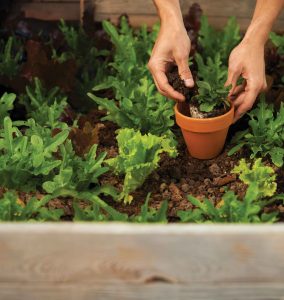Compost: Creating fertile soil
Keys to successful composting: Choose a good container, monitor the proportions of its elements, and wait for the right amount of time.
THE COMPOST
The word compost, which comes from the Latin componere(to gather), is a process through which the collection of different organic materials, eventually, creates fertile soil. In recent years the compost has become a very popular practice, due to the enormous contribution it makes to the environment.
This practice is very simple for any household and, if the process is well understood, it does not require much effort.
The compost is an organic fertilizer, which is obtained from the natural degradation of different organic matter, which, if settle in specific layers for a given time, undergoes a decomposition process with the help of microorganisms.
The final product of compost, humus, helps create a more fertile soil and allows the plants to have a better absorbance of nutrients.
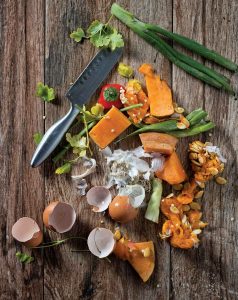 How to start?
How to start?
To produce a compost pile, firstyou need to gather all the materials you will need.
These materials can be found in most homes, or can be easily acquired at grocery stores.
The main material, and probably the first thing that comes to your mind when you think of compost, is the organic kitchen waste.
You can use any organic or biodegradable matter, such as remnants of fruit and vegetables, eggshells, leftovers, hair, feathers, tea bags, coffee filters, leaves and branches, sawdust, grass, weeds, flowers, or paper napkins. The more crushed waste is, the faster the compost will be created.
Kitchen leftovers have nutrients that can be used to produce fertile soil through composting.
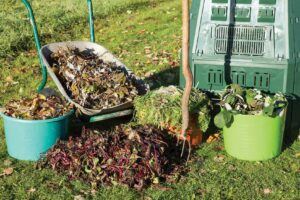
Dry leaves add carbon to the mix: fresh grass, nitrogen.
Key to success in compost.
To elaborate an effective composting process you must control certain aspects. There are four equally important ingredients that composting organisms require to work successfully. The right proportion of each one of these materials provides enough nutrients, which allows bacteria to work at a rate that will heat up the pile.
- Carbon: provides energy to the mix; the oxidation of carbon produces heat which generates energy. Carbon:Nitrogen ratio should be about 30:1. You can obtain carbon from tortillas, dry grass, leaves, wood ashes, paper napkins or shredded paper.
- Nitrogen: you will need it so more organisms can grow and reproduce; also to oxidize carbon. You can find it in leftovers and fresh grass.
- Oxygen: use it for the oxidation process of carbon. Add this component by moving the contents every once in a while, and creating perforations or holes in the container.
- Water: in the right amount, it maintains the activity of the mix without causing anaerobic conditions (too much water can rot the compost). The temperatureshould vary between 50º – 70ºC and the humidity at 50%.
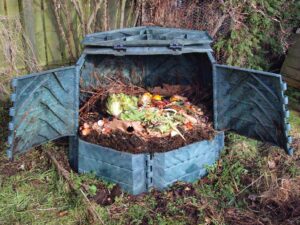
Plastic container for compost.
Containers for compost.
In the market or the local supermarket you can find special containers for compost, they come in different shapes and sizes; there is also the option of making your own compost container at home.
- Plastic: There is a wide variety of plastic containers for compost; there are national and local distributors from whom you can get them. To make one at home, use a big plastic garbage can,make holes throughout the body and in the bottom to aeratethe compost properly. It is important that you place the container in permeablesoil so it does not puddle. This homemade container needs a constantmovement of the mixture inside, favoring the oxygenation of the compost.
- Wood: this type of container has not a long lifespan, but it provides for the compost the ventilation and humidity required, so you will not have to aerate It is adequate for making large amounts of compost.
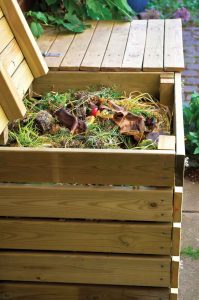
Compost wood container.
How to build and arrange a compost pile?
Remember always to verify the proportions of each element of the compost, that is the key of successful composting. When you have all the materials, you must place the different layers one by one in the following order:
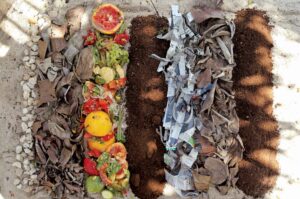
Photography: Ana María Icaza
To start, place a layer of a mix of dry leaves, dry grass or dry plant trimmings in the bottom of the container. The first level of the compost should hace a thickness of about 10 to 15 centimeters high approximately.
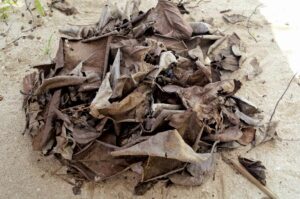
Photography: Ana María Icaza
Collect at home organic kitchen waste, this material will serve for the second level. You can keep the materials in a bag or container and refrigerate, but they must be at room temperature before adding this materials to the compost.
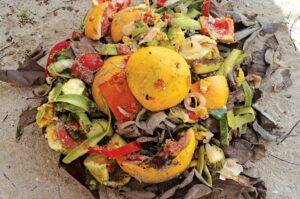
Photography: Ana María Icaza
Fill the rest of the container alternating between on layer of dry leaves and soil, and another layer of organic matter.
The last layer should be similar to the first layer, or just soil; you must not leave organic or kitchen waste exposed.
I recommend placing a top layer of ash or quicklime to prevent odors and to accelerate the decomposition process.
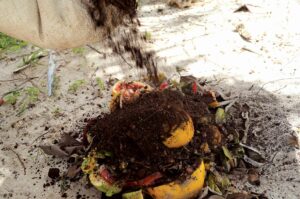
Photography: Ana María Icaza
Moisture and oxygen in the compost are very important elements, they need to be monitored. If you need water, with a hose, spray water as required.
And if oxygen is needed, move the content inside with a shovel or pole, this allows the ventilation of the mix.
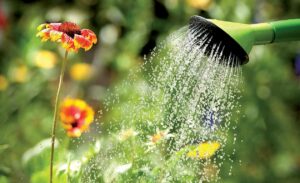
When making compost, different types of organisms and microorganisms, such as worms, ants, woodlice, worms, bacteria, or fungi will appear.
It is usual, and constitutes an important part of the process, each one of this elements has a fundamental role in the decomposition of matter.
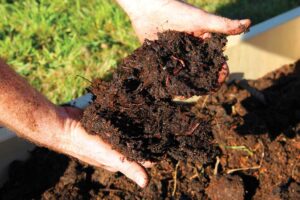
What to avoid in the compost?
Never add to the compost sanitary waste, leather, rubber, plastic, glass, metal, vacuum cleaners contents, paper in big quantities, cigarette filters, plants sprayed with poisons or pesticides, toxic substances, cleaning products. Nor is it advised to add fats, raw or cooked meat, or dairy products.
It is best not to deposit bones, as they take longer to decompose.
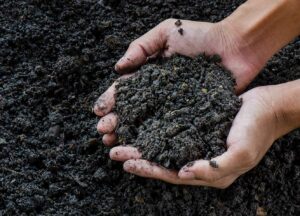
Humus.
Result of good compost
When the waiting period has come to an end, you will obtain a soil that can serve as fertilizer, the humus. This fertilizer soil has a similar scent to wet earth, black or dark brown color, a porous consistency and is slightly moist.
With these characteristics,it will be ready to fertilize the garden, fertilize potted plants, improve the quality of garden soil, help good transplants and prepare the land for planting new seeds.
